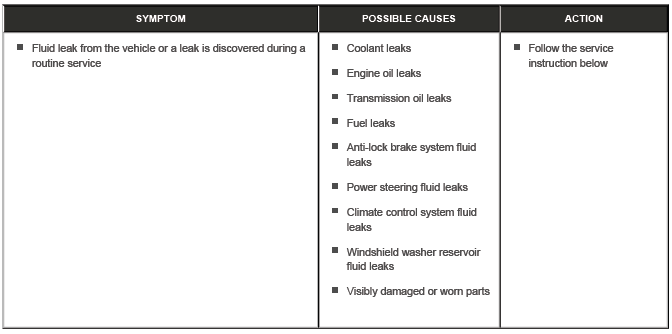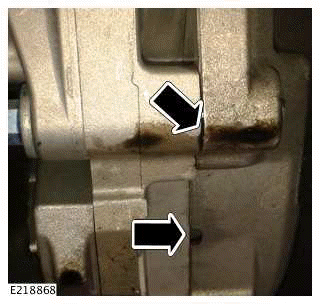Land Rover Defender: Fluid Leaks
DESCRIPTION AND OPERATION
GENERAL PROCEDURE - FLUID LEAK DETECTION

SERVICE INSTRUCTION
NOTES:
- Slight surface oil dampness without drops are acceptable and should not be repaired as a leak
- Be aware that fluid leaks from above any component may cause oil to collect on the engine and transmission undershield i.e. engine leaks, oil cooler pipe leaks, fuel leaks, coolant leaks
- Fixing the incorrect leak does not satisfy the customer
1. Remove any undershield or engine covers to gain access to the suspected leak area
2. Using a suitable degreaser, thoroughly degrease the suspected component all the way around as well as, approximately, 25-50mm (1-2 inches) above the suspected leak
3. Using a suitable leak detector spray, thoroughly coat the suspected component as well as, approximately, 25- 50mm (1-2 inches) above the suspected leak
4. Install the transmission/engine undershield and engine covers if removed
5. Complete a suitable road test and make sure that the engine gets to normal operating temperature
6. Remove any undershield or engine covers to gain access to the suspected leak area
7. Inspect the suspected component for fluid leaks, the detector spray should leave a trace from the leak area

Engine oil leak example graphic. Oil is present between the engine and transmission mating faces, including evidence of oil in the 3 breather holes
8. Report or repair the source of the fluid leak
9. If no leak is found, continue diagnosis until the exact source of the leak is found
10. Install the transmission/engine undershield and engine covers if removed

